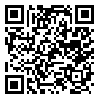Volume 8, Issue 2 (8-2018)
IJOCE 2018, 8(2): 195-208 |
Back to browse issues page
Download citation:
BibTeX | RIS | EndNote | Medlars | ProCite | Reference Manager | RefWorks
Send citation to:



BibTeX | RIS | EndNote | Medlars | ProCite | Reference Manager | RefWorks
Send citation to:
Ganjavi B, Ghodrati Amiri G. A COMPARATIVE STUDY OF OPTIMUM AND IRANIAN SEISMIC DESIGN FORCE DISTRIBUTIONS FOR STEEL MOMENT RESISTING BUILDINGS. IJOCE 2018; 8 (2) :195-208
URL: http://ijoce.iust.ac.ir/article-1-340-en.html
URL: http://ijoce.iust.ac.ir/article-1-340-en.html
Abstract: (31013 Views)
In this study, constant-ductility optimization algorithm under a family of earthquake ground motions is utilized to achieve uniform damage distribution over the height of steel moment resisting frames (SMRFs). SMRF structures with stiffness-degrading hysteric behavior are modeled as single-bay generic frame in which the plastic hinge is confined only at the beam ends and the bottom of the first story columns. Several SMRFs having different fundamental periods and number of stories are optimized such that a uniform story damage (ductility demand) is obtained under a given earthquake ground motion. Then, the optimum lateral load pattern derived from the optimization process is compared with that of the design load pattern proposed by the latest version of the Iranian code of practice, Standard No. 2800 to evaluate the adequacy of the seismic code design pattern. Results of this study indicate that, generally, the average story shear strength profiles corresponding to the optimum seismic design are significantly different from those of the Standard No. 2800 story shear strength pattern. In fact, the height-wise distribution of story ductility demands resulted from utilizing code-based design lateral load pattern are very non-uniform when compared to the corresponding optimum cases. In addition, a significant dependency is found between the average story shear strength pattern and inelastic behavior of structural elements.
Keywords: optimum design, Iranian seismic code, uniform damage distribution, ductility demand, steel moment-resisting frame.
Type of Study: Research |
Subject:
Optimal design
Received: 2017/08/26 | Accepted: 2017/08/26 | Published: 2017/08/26
Received: 2017/08/26 | Accepted: 2017/08/26 | Published: 2017/08/26
| Rights and permissions | |
 | This work is licensed under a Creative Commons Attribution-NonCommercial 4.0 International License. |





